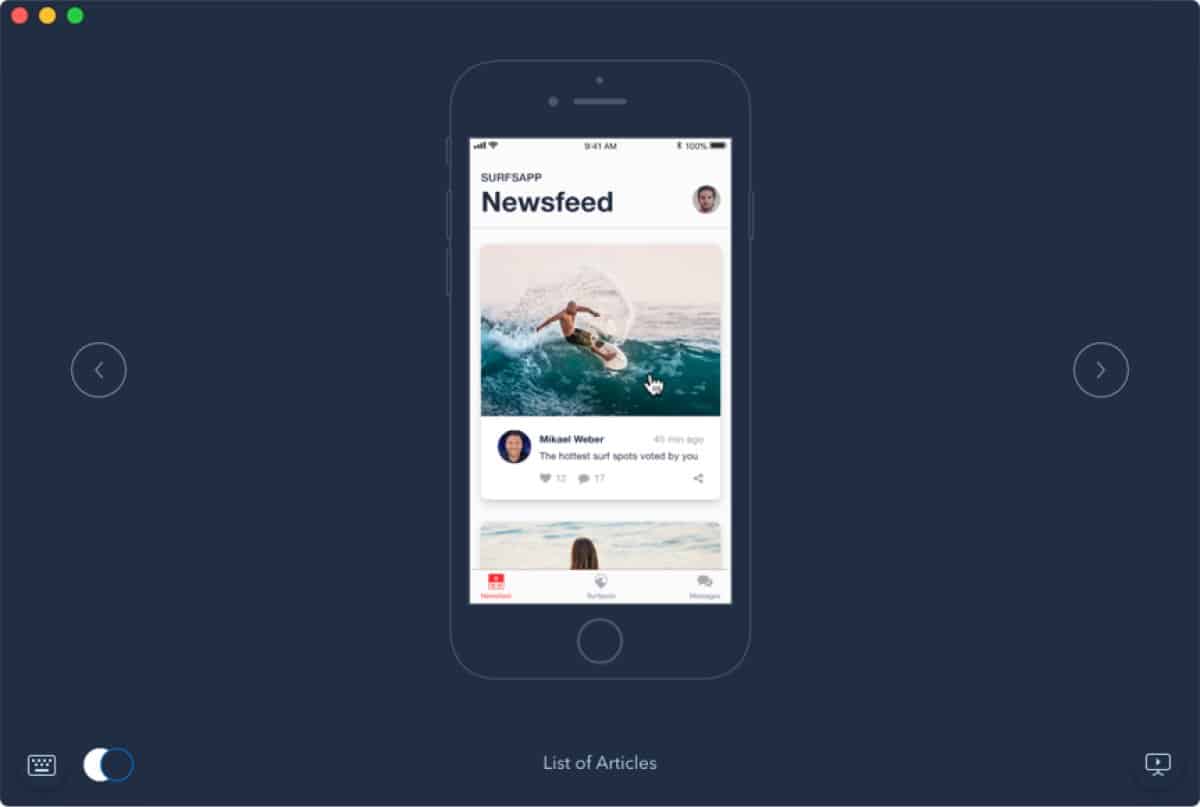Innovation is a word that gets thrown around a lot in the tech industry. Every little cosmetic change, UI evolution, or new feature is quickly branded as innovative by the company bringing it to market — and the tech writers often hype it aggressively.
But in reality, not everything that looks like a design improvement is really a design innovation (or even an improvement at all). Sometimes it’s just a small tweak to smooth out branding, or a fix to something that was broken. Sometimes, changes are the exact opposite of innovative, such as rolling back features or designs that just aren’t working.
So as an entrepreneur, what is your role in the innovation process? And should you really be desperate to “innovate” in the first place? Here’s our guide to what design innovation really means — and what role you can play.
What is Design Innovation?
Design innovation is typically defined broadly, as either a process or specific change that makes a product better. This can be anything from redesigning a piece of industrial equipment so that it’s less expensive to build or service, to improve a mobile app UX.

But if every design improvement is an innovation, why not just use the phrase “design improvement?” The fact is, some design changes really are innovative, representing a major leap forward for not only the product but its entire industry. For example, the buttonless touch interface of the iPhone was a historic design innovation. None of the technology on that phone was new, but its design made it accessible, versatile, and incredibly useful to a broad user base.
Changes in style can also be mobile app design innovations — like the development of material design. New control devices or paradigms, like the mouse and gesture control functions, are also major design innovations.
Even small details of product design can be innovative — but they need to go beyond incremental improvement and introduce something new. A design innovation:
- Provides significant, measurable improvement in some aspect of design.
The goal could be internal to the design, like making an app more navigable or creating a better user flow that eliminates steps. It could also be external, such as improving user experience or retention. - Departs from the normal way of doing things.
As we said earlier, not all improvements are innovations. Updating the look of your app or adopting a new industry best practice may be a huge improvement, but it’s not necessarily a design innovation. - Moves the bar.
A design innovation might not set a new standard, but it should have implications for what comes afterward. At least for a particular use case, you’ve found a better way of doing something than how you (or anyone else) did it before.
That may be supplanted by further mobile design progress, but if it’s truly an innovation, you generally shouldn’t find yourself going back to the old way of doing things.
Design Innovation and Entrepreneurship
Design innovations have played a crucial role in the birth and growth of many successful technology companies. While new functionality, meticulous execution, and careful marketing can all play a role in making an app successful, sometimes all it takes is a single design innovation to catapult a simple app idea into a wildly successful venture.
Design Realism
Tech entrepreneurs are touted as brilliant innovators, and it’s easy to be seduced by this flattering portrayal. However, if you’ve spent any time in business, you should know that’s not how it works. First-mover advantage is a real thing, but it’s no guarantee that you’ll be touted as an industry-shattering innovator — or that your idea will even catch on at all.
Just as often, design innovation is only a footnote in the story. For example, Sidecar had already pioneered a fairly modern approach to ridesharing back when Uber was just a black-car service, but that didn’t stop Uber from driving it out of the market. The reasons had nothing to do with the design or feature set. Instead, financing, governance, controversial business practices, and other miscellaneous factors gave Uber its critical edge.
Why is this important? Because innovation, like everything else, can be overemphasized. Sometimes your users are happy with their old workflow, even if your new one is more logical. Sometimes your mobile app design is good enough as it is, and any attempt to innovate is just going to waste resources and delay the release. Sometimes, there’s no need to innovate, because there are already good solutions available off the shelf.
Even exploiting new market opportunities doesn’t necessarily require innovation — at least from a design and development perspective. There might be an opportunity to target your app to a different age group, with a few simple, cosmetic changes and some solid branding work. Maybe your competitors are packing in too many features — including ones their users don’t need (or simply don’t know how to use).
Or maybe it’s just a question of cash flow. A design innovation might make your app appealing to investors, but it could just as easily make your app seem a little too risky compared to a more conventional approach.
You get the point. Design innovation isn’t always necessary — and it’s not always seen as a positive. Like anything else in mobile app design and development, it’s a matter of how you use it.

Developing an Approach to Innovation
Focus on the User and Use Case
Most design innovation ultimately comes back to the use case. You might be making it easier for users to accomplish a task, saving them time or making the UI more flexible, but whatever the innovation, it’s innovative because it ultimately helps the user accomplish a task with less effort.
As such, the better you’re able to identify and explore a particular use case, the more likely you’ll be able to develop an innovative solution. Do everything you can to understand what your users are doing with your app (or your competitors’ apps). What primary task are they trying to accomplish? What challenges do they face in that task? What do they like and dislike about the available solutions?
While you’re at it, look at related use cases. There might be multiple overlapping scenarios that appeal to different user segments. For example, if you’re building a cooking timer, you might want to look at what other reasons your target audience may have for using a timer.
How many are using multiple specialized timer apps, and how many are using flexible, multi-purpose apps? Are there users who would prefer a single, powerful timer who aren’t being served by current offerings? Are there users interested in, say, sous vide who might want a more specialized app focused on just this type of cooking time?
Make Life Easier for Users
Big ideas can lead nowhere, but small practical ideas are always valuable. If you can come up with a mobile app design idea that makes a use case quicker and more convenient, there’s a good chance that idea will succeed. Even if you’re only peeling off a small subset of users, by understanding their needs and addressing those needs better than anything else out there, you can build a niche for your product.

One example is an app we built to do user flow: Overflow. Users can learn it in minutes and easily put together a complete user flow in no time. That user flow doesn’t require you to learn how to prototype a mobile app or master all the different types of fields, objects, and connections in a flowcharting program. It has the key functions needed to get the job done, as it’s optimized for ease of use and speed.
Sharing that flow is just as easy. Once you finish putting it together, just share a link with your team. They can see everything on one page, and easily experience the flow an actual user would take through the app. This practice makes it ideal for anything from brainstorming, to finalizing your mobile app design, to pitching your app idea to investors.
Give Your Mobile Design Team the Freedom to Experiment
To deliver design innovation, your team needs to be able to try new things — and they need to be able to fail. But for many companies, experimentation is just too costly to be realistic. They can speculate about different designs, but there’s only so much they can do to vet new ideas before sending them to the developers. And once an app reaches the development stage, the cost of getting the design wrong skyrockets.
Mobile app entrepreneurs, designers, and developers need to start integrating high-fidelity prototyping into their process. By creating playable prototypes, your team can test, refine, and perfect the app before it gets to the development stage. That makes it easy to investigate creative alternate solutions without delaying your development cycle.
Proto.io supports mobile app prototyping across all design stages, from sketching to creating a prototype that’s almost indistinguishable from the final product. This enables you to give your team more freedom to experiment, while simultaneously accelerating your development process.
But getting the right prototyping tool is only the start. To fully empower your team to innovate, you’ll probably need to change your internal workflow. You’ll want to start user testing earlier in the process, so you can find bugs early, rather than waiting to scout them out in QA.
You also may want to move toward a more collaborative style of product development, where designers, developers and other stakeholders work together across the whole process.
Your designers and developers have different areas of expertise and different ways of problem-solving. By putting them together early in the process, you’ll be able to benefit from the creative interplay between different team members, for a better, more innovative app.
Bring Design Innovation to Your Apps
Innovation may not always be sufficient to make your apps succeed, but it’s definitely necessary. Proto.io can help you unleash your team’s innovation — for a better app, a more successful company, and happier users.
Proto.io lets anyone build mobile app prototypes that feel real. No coding or design skills required. Bring your ideas to life quickly! Sign up for a free 15-day trial of Proto.io today and get started on your next mobile app design.
Have a favorite innovation tip for mobile entrepreneurs? Let us know by tweeting us @Protoio!







